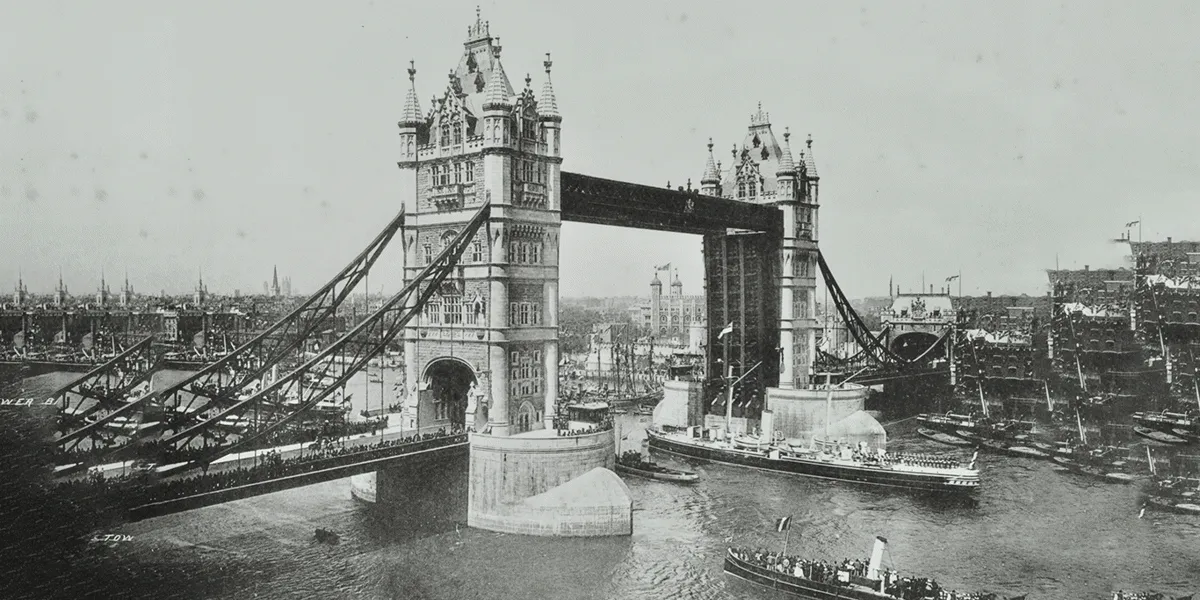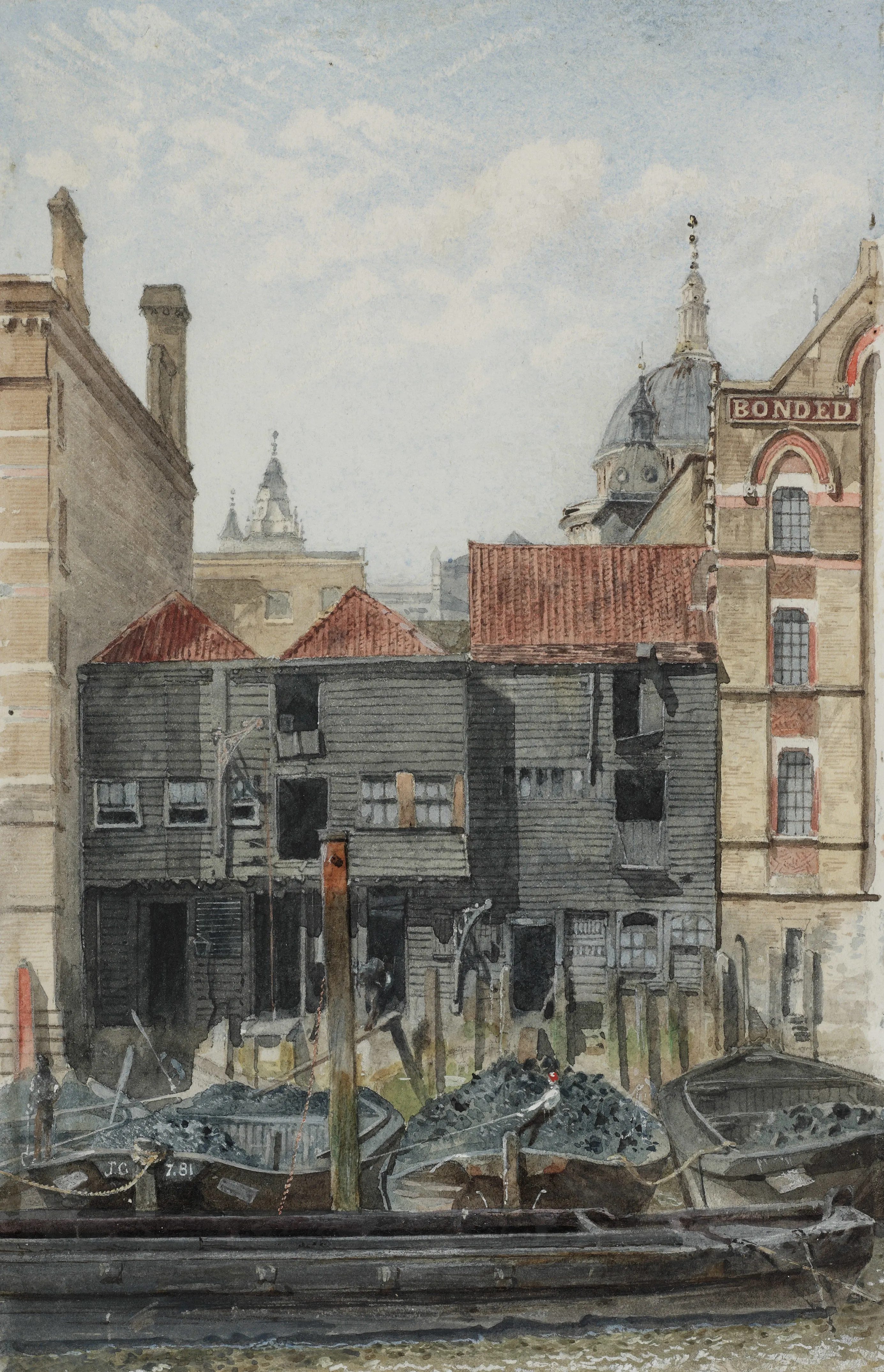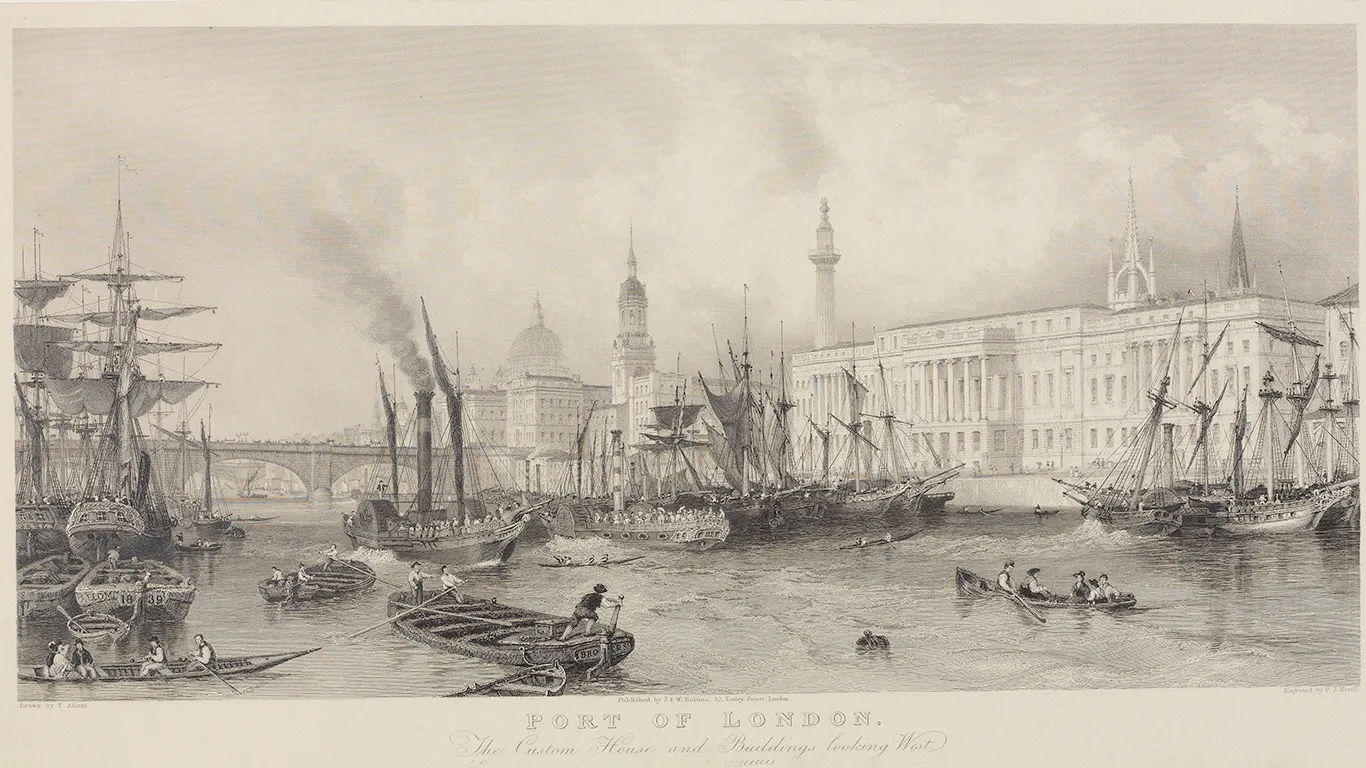Tower Bridge and the Port of London

At first glance, including this image of Tower Bridge was an odd choice for an exhibition about a London that has disappeared, because in a literal sense Tower Bridge is not lost. It is one of London’s most famous landmarks, a must-see site for tourists and a focal point of celebrations such as the Olympic Games, Queen Elizabeth’s II jubilee celebrations and the coronation of King Charles III. Although the bridge is still a London landmark, something significant has changed: the river underneath it.
Tower Bridge

This photograph was taken on the first day that Tower Bridge was open to the public on 30 June 1894. At this time the Port of London was the busiest port in the world. It was a central hub for commodities from the British Empire such as ivory, cotton, sugar, tea which passed through London and to all parts of the world.
Coal barges
Closer to home, coal barges bringing fuel from the north were an ever-present site on the river. Tower Bridge sits on a part of the River Thames called the Pool of London and 75% of the capitals fresh food passed through warehouses in the pool. The Pool of London stretched from London Bridge to Limehouse.

The London skyline
The photograph of Tower Bridge also hints at another aspect of a lost Victorian City, its skyline. This picture looks north so we can see the Tower of London framed by the bridge, with the spires of Wren churches to the west that were built following the Great Fire of London in the seventeenth century. Until the twentieth century these churches were amongst London’s tallest buildings and their individually designed spires were a prominent and characteristic feature of London’s skyline during the Victorian period. They were part of a picturesque aesthetic which:
relies on unexpected juxtapositions, changes in angles, domes, spires and towers, jostling for position on the skyline.

You can search for more images of the Port of London on the London Picture Archive.
Search the London Picture ArchiveFurther reading
Port of London through time by Geoff Lunn, 2011 (ref. 34.1 LUN)
Explore the Lost Victorian City